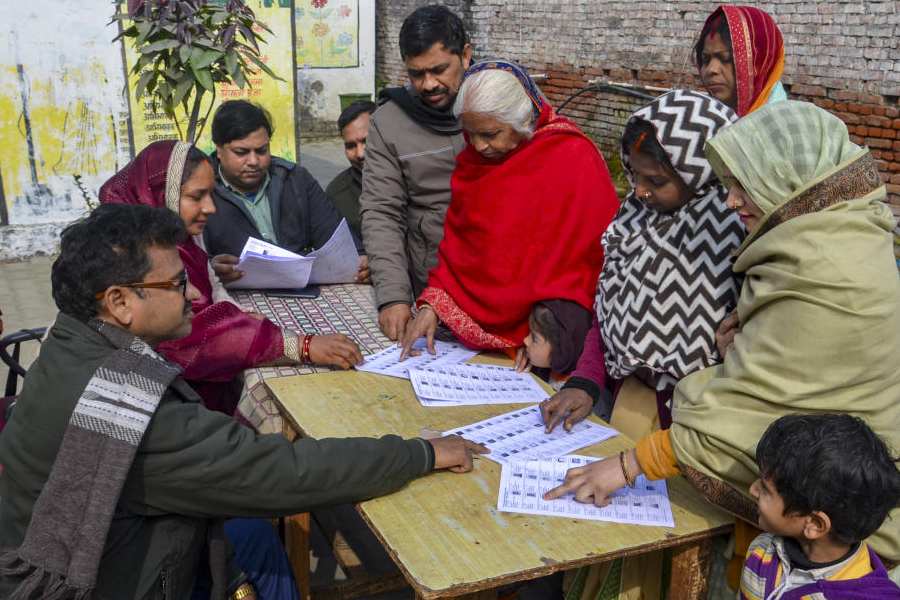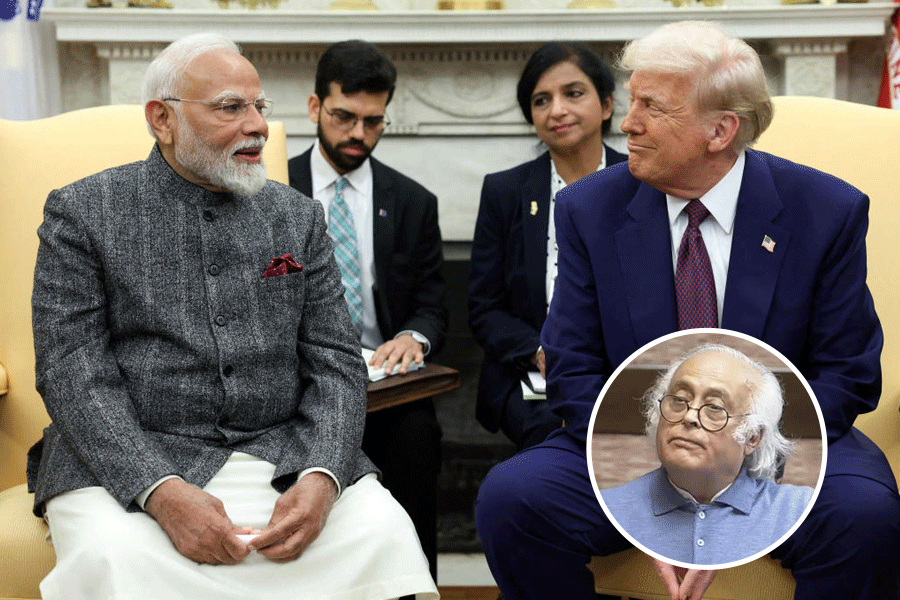 |
| Vision worry |
New Delhi, Jan. 30: Five in 10 patients diagnosed with diabetes before they turn 25 are likely to develop a sight-threatening eye complication called diabetic retinopathy within 10 years, a hospital-based study from India has suggested.
Doctors say the study, described as the first in the country to explore the prevalence of retinopathy among patients with young-onset diabetes, highlights the need for aggressive control of sugar and blood pressure in this set of patients.
“These are things that can be done to postpone retinopathy,” said Viswanathan Mohan, chief diabetologist and chairman of the Madras Diabetes Research Foundation, Chennai, who led the study just published in the Journal of Diabetes and Complications.
Retinopathy is a condition in which fine blood vessels in the retina suffer damage and, at times, leak fluid into the centre of the eye that can cause vision to blur. While retinopathy has long been recognised as one of several long-term complications of diabetes, most available studies on the prevalence of retinopathy have been among patients with diabetes that strikes when people are in their 40s or 50s.
Doctors say the study’s findings are significant because anecdotal evidence from hospitals across the country suggests that about 10-15 per cent of patients are diagnosed with diabetes when they are below 30.
Medical surveys from across the country over the past decade have led doctors to estimate that India has more than 60 million people with diabetes and this number is expected to rise to over 70 million within the next 10 years.
“No one knows how many new cases occur each year,” Mohan said. “But complications such as retinopathy among patients with young-onset diabetes are particularly worrying because many such patients are in the peak of their careers when the complications occur.”
Mohan and his colleagues examined the prevalence of retinopathy in 150 patients with type-1 diabetes that typically strikes early in childhood and is caused by the destruction of insulin-producing cells in the pancreas and 150 patients with type-2 diabetes, the disease associated with weight gain, obesity and lack of exercise.
They found 53 per cent of patients with type-1 diabetes and 52 per cent of those with type-2 diabetes had developed retinopathy. Type-1 patients developed retinopathy at an average age of 31 years, while type-2 patients developed it at an average age of 38 years.
The study also found that high blood pressure increased the risk of retinopathy.
“Retinopathy is the result of uncontrolled sugar and uncontrolled blood pressure,” said Shashank Joshi, consultant endocrinologist at the Lilavati Hospital and Research Centre, Mumbai, who was not associated with the Chennai study.
Joshi had three years ago led a project called Screening India’s Twin Epidemics in which doctors screened more than 15,000 patients from eight states and found that one in five patients with diabetes also had high blood pressure.
“A diagnosis of diabetes should be viewed as seriously as a heart attack,” said Joshi. “After a diagnosis, efforts to control blood glucose through a combination of diet, exercise, and drugs should be as aggressive as managing a patient who’s had a heart attack.”
While earlier studies have indicated that the incidence of sight-threatening retinopathy is high among South Asians compared with other population groups, some endocrinologists caution that the prevalence figures from the Chennai study appear unusually high.
“There may be a bias because the findings are based on a referral centre or because this subset of patients may have had rather uncontrolled diabetes,” said Anoop Misra, a senior endocrinologist at the Fortis Hospital’s Centre for Diabetes Obesity and Cholesterol, New Delhi, who was not connected with the study.
“It is possible that some patients may also be genetically predisposed to develop retinopathy,” Misra said.











